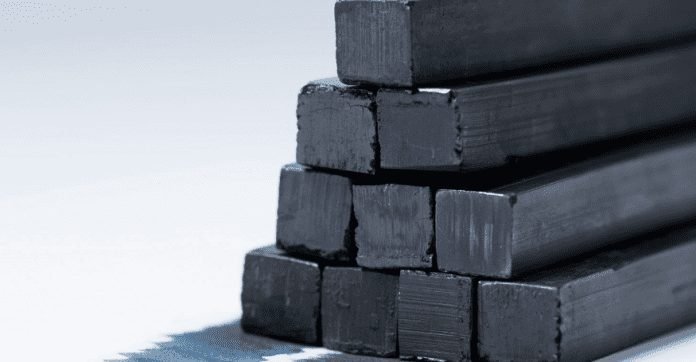Last Updated on February 21, 2024 by Nasir Hanif
History and origin of graphite Which used in Drawings. We use it practically every day, or almost. Sometimes harder to obtain good, precise, light lines. Sometimes softer, for a darker stroke, so as not to trace grooves on the drawing sheet or make chiaroscuro. We are talking about graphite, the material with which the soul of drawing pencils is made, that dark stem enclosed in a wooden casing, round or hexagonal. As we said, we use graphite daily, and for this reason, we take it a little for granted. Yet, it is not a material that has always been in our hands. Indeed, not many centuries have passed since the “discovery” of graphite. But where does this material come from? Why was graphite chosen for the drawing pencils?
Table of Contents
Graphite: the characteristics of the mineral
What is graphite? It is a mineral and, like a diamond, is one of the allotropic states of carbon. What does it mean? In simple terms, it means that graphite is one of the states in which carbon can occur in nature. It is essential to underline that, although very similar, graphite and diamond differ from each other thanks to a diversity of the chemical bond that characterizes them. In fact, in short words, this difference in the chemical bond leads these two minerals to have different appearances and physical properties. Graphite, for its part, is a material that, in addition to carbon, contains various impurities. The characteristics of this mineral are different and particularly interesting.
It is a relatively soft mineral, greasy to the touch, and very easy to leave. It has a melting temperature above 3000 degrees centigrade and is a good conductor. We find pure graphite mines mainly in Siberia, New York, and Sri Lanka; at less pure levels, it is also present in Italy, as in the Chisone and Pellice Valleys. The most evident characteristic of this mineral is leaving gray traces when it is placed in contact with other objects, thanks precisely to its characteristic flaking. The same term graphite comes from the Greek graphein, which means to write. Hence, therefore, the choice to use it for the production of drawing pencils!
The discovery of graphite and the development of the drawing pencil
Therefore, graphite is a mineral in nature extracted from mines present in various parts of the world. Therefore, it is not a question of something that has been invented, but instead of something that has been discovered. This discovery, more specifically, took place in 1565 in Cumberland, Great Britain. The people of the place made the discovery, but they only partially understood the potential of this material, which was initially use almost exclusively to mark livestock. These dark stones were then collected and, after being wrapped in a cloth, were used to draw confusing signs. However, someone also applied graphite flakes on top of bamboo canes to have a more versatile tool.
The first to create an ad hoc container in the form of wood for graphite were two Italians, namely Simon and Indiana Bernacotti. The information available is few, but we know that the two put “pencils” by piercing pieces of juniper and inserting and gluing, inside them, a core of graphite. To perfect this invention was the German factory Faber-Castell, in 1762, to start industrial production of graphite pencils. In this case, the mine insert between two cedar wood sheets, subsequently glued together. The decisive step towards the modern graphite pencil was finally made by Nicolas Jacques Conté thirty years later. The French scientist developed a technique to mix graphite with clay to obtain more versatile, more or less complicated mines as we know them today. This technique, conceived by Conté, will then be further developed by other personalities, such as Joseph Hardtmuth.
The uses of graphite
Today graphite is used in many fields. We all understand that it is done to get drawing pencils for cool drawings, but this is just one of the many uses of this mineral. We find it, for example, inside the cooling systems of nuclear power plants, and it is an essential element in the refractory ceramic manufacturing process. It is also used as an antirust substance in electricity and even as an ingredient in lubricants. However, we are especially interested in the use of graphite for the creation of drawing pencils.
Graphite for pencils today
As it turns out, centuries ago, the graphite used to create the first pencils was simply the mineral, broken up and used directly. Over time, the mineral began to be mixed with clay and other substances. Today, however, natural graphite is contrasted with artificial graphite, obtained synthetically. To do this, carbonaceous materials such as charcoal, anthracite, petroleum coke, or metallurgical coke are generally heated to very high temperatures.
But how is an industrial pencil made today? The ground graphite is mixed in varying percentages with clay and other binders; the resulting mass is pressed, dried, and finally drawn to have the mines as we all know them. To make them more resistant, the mines are then subjected to firing at 1,000 degrees Celsius. These mines are then inserted into seasoned wooden tablets, glued, shaped, lacquered, and painted. We have concluded this article, and we are sure that knowing the origin and properties of the graphite mineral can give your drawings an edge!



























